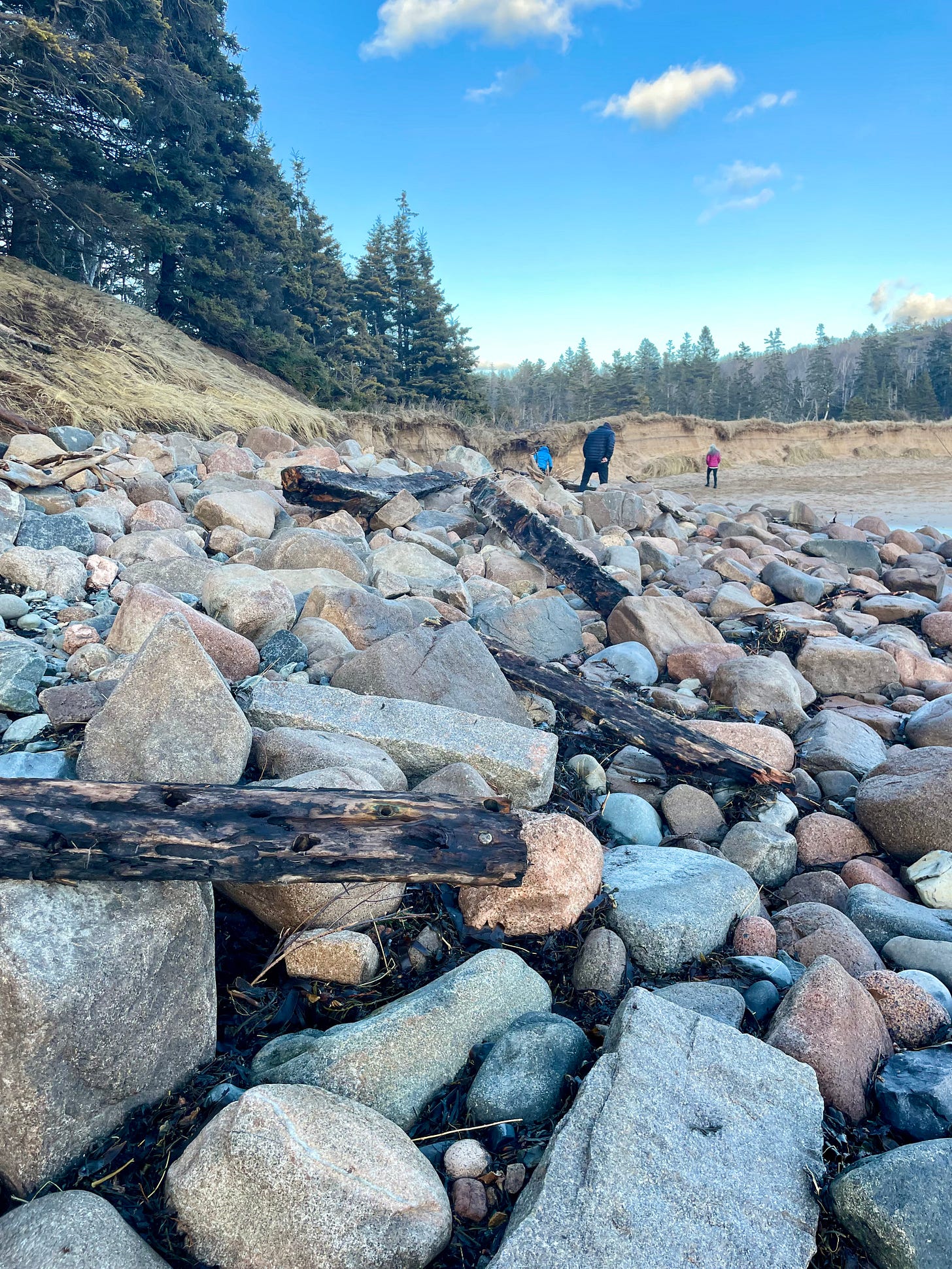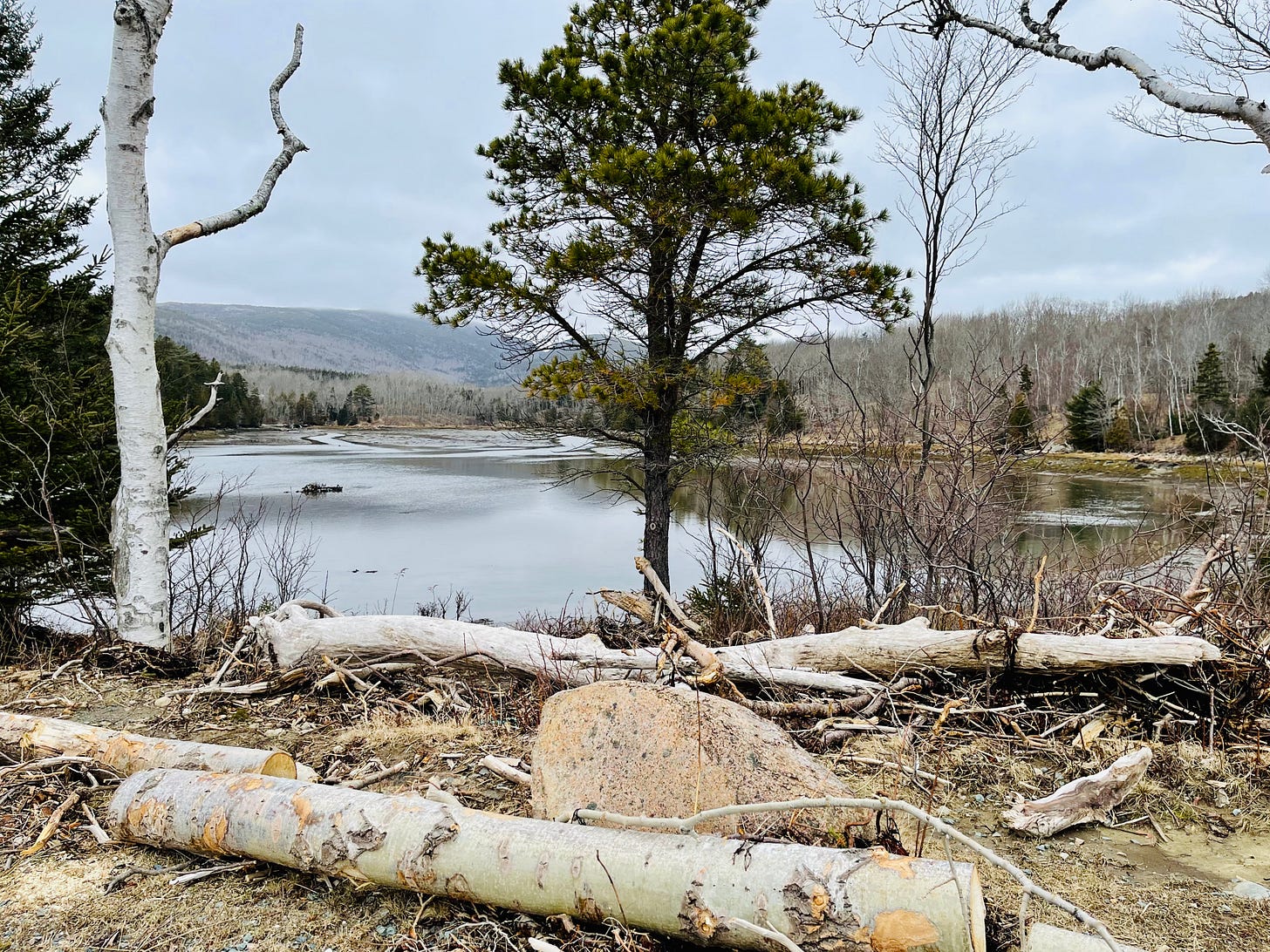BAR HARBOR—Will Acadia National Park be open for the season despite an unofficial estimated $20 million in damage from a duo of storms in January?
Yes.
Will it be normal?
It defends on how you define normal.
Park officials are still trying to determine what to fix, how to fix it, and where to find the millions of dollars to do so, Acadia National Park’s Deputy Superintendent Brandon Bies told League of Towns members on Tuesday.
“We anticipate the park operating more or less normally for the season,” Bies said.

One of the problems is the much-used 2.2 mile Ocean Path and Ocean Drive, which runs above Sand Beach toward Thunder Hole and beyond. The park lost approximately 1,000 feet of the Ocean Path, and the storms undercut portions of Ocean Drive.
“It’s completely gone in sections. It doesn’t exist in sections,” Bies said of the path. “It’s a major, major pedestrian thoroughfare. If it doesn’t exist, people walk in the road.”
Options include closing a lane of the Park Look Road or constructing temporary wooden structures for pedestrians to traverse.
The Seawall picnic area, he said, has been getting impacted by storm after storm, each of which “seems to dump hundreds and hundreds of stones in the area.”
And then there are the trees.
“We had 700 trees we had to remove between the picnic area and the campground,” Bies said. That tree count is just for that part of the park. The park brought in an arborist.
In an article for the Maine Monitor, Jacqueline Weaver talked about a Kate Cough article, where Cough spoke to Peter Slovinsky, who is a marine geologist with the Maine Geological Survey. Slovinsky has made it his life’s work to study sea level rise as well as climate change. “He told The Monitor last year that the state is likely to see more downed trees as storms intensify and wind patterns change.
“‘I can’t scientifically say there’s an increase in southeasters,’ said Slovinsky. But anecdotally? ‘We’re seeing more southeasters in the late fall and early winter.”’
In Maine, southwest winds mean that bluffs are more exposed to waves. Trees are pummeled and often fall.
“All our trees are basically conditioned for nor’easters,” Slovinsky said.

Along with all those trees at Seawall, the storms undermined multiple roads within the park. Sand Beach had major erosion, which is still happening. The hill by the stairs from the parking area has been impacted. Trees are sloughing off to the beach, which makes them concerned about the infrastructure up on the hill.
“All of a sudden we’re seeing impact after impact that we’ve never seen before,” Bies said. So, the park is pressing pause to determine what and how to invest in the infrastructure. “There are definitely major impacts. Some are quick fixes. Some are not.”
The park looks at repairs through a framework that has three elements: resist the change(put up a retaining wall, etc); accept it (a managed retreat); and direct the change, which is a kind of compromise.
It would take a disaster supplemental in the federal budget to do all the fixes, he said. A strange part of the problem is that the storms don’t have the name recognition of hurricanes and therefore, not as much of an impact in the national media.
The $20 million, he said, is an unofficial estimate and the storms, he said, were the “straw that broke the camel’s back” for older damage while also creating new damage.
Mount Desert Town Manager Durlin Lunt asked about the Otter Creek Causeway. Bies said that when looking at a site like that, the question becomes “did the storm exacerbate an existing issue.” Sometimes, when that happens, you can fix the whole thing, from the federal government’s point of view, he said.
“We manage 63 miles of coast, between MDI, the islands, and Schoodic,” he said. The park will probably organize with Friends of Acadia to do debris clean-ups.
At the Southwest Harbor Select Board’s meeting, board members discussed the Seawall Picnic area being covered in rocks. They also discussed the Seawall Road’s destruction and how that might impact policing in the town in relation to covering Tremont. Some board members said that DOT and Acadia National Park had strikingly different strategies for reconstructing the road, which connects to some ranger housing as well as the Ship’s Harbor Trail and Wonderland Trail.
At the meeting, it was said that the state DOT might abandon the road. This has not yet been verified by the Bar Harbor Story by press time, but we reached out to DOT, Wednesday. We’ll update the story if we receive additional information.
Update: Thursday afternoon, the DOT said that it is still talking internally and with other stakeholders (Acadia National Park, the municipality, etc.) about the best path forward. The situation is complicated because it is a state road within a national park. The DOT said it’s looking into things such as local impact, emergency services, utilities, before it comes to a decision.
OTHER PARK INFORMATION FROM ANP:
The Park Loop Road typically opens April 15.
An earlier spring thaw has led to earlier closures to protect Acadia's historic carriage roads during "mud season" in Maine. Walking, bicycling, or riding horses on them in these wet and soft conditions can cause significant damage.
Jordan Pond Road is expected to close to through traffic on Monday, April 1 as part of a bridge repair project. Stanley Brook Road will remain open to provide access to the Jordan Pond area.
Areas including Jordan Cliffs Trail, Precipice Trail, and Valley Cove Trail are closed to protect peregrine falcons from human disturbance or harassment during an annual nesting period.
The park hasn’t updated its operating times for 2024. The 2023 times and dates are below:
Southwest Harbor Select Board meeting










